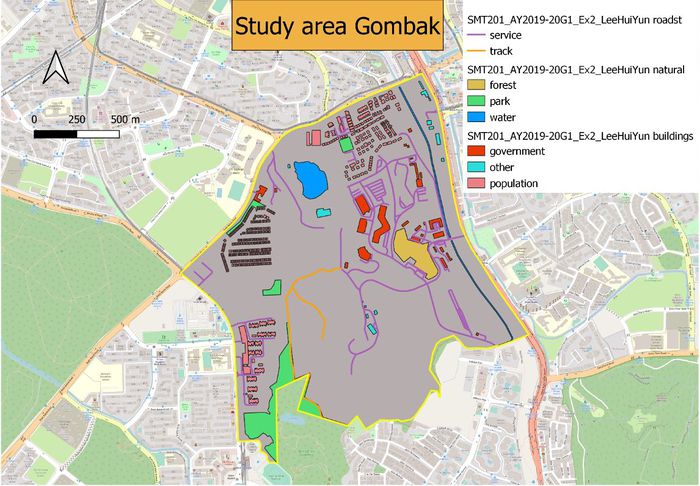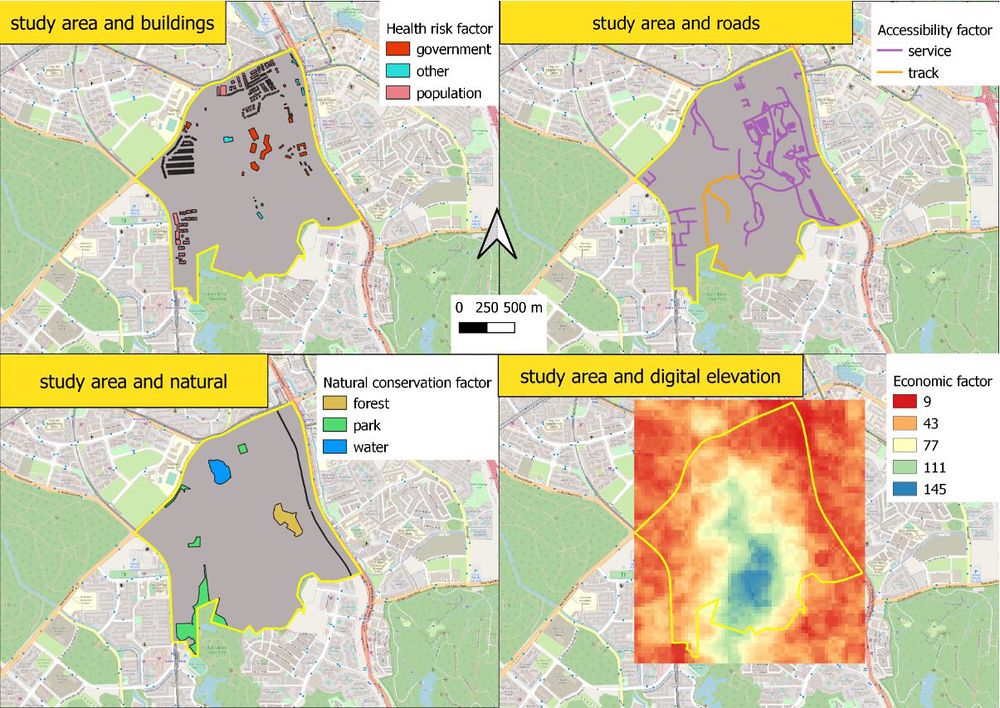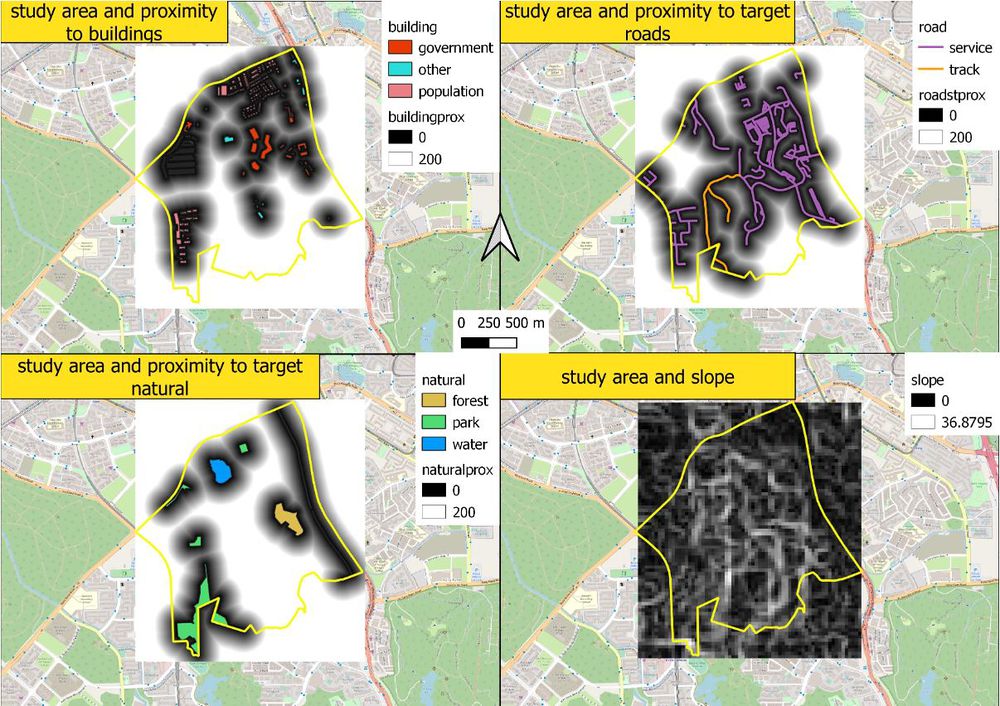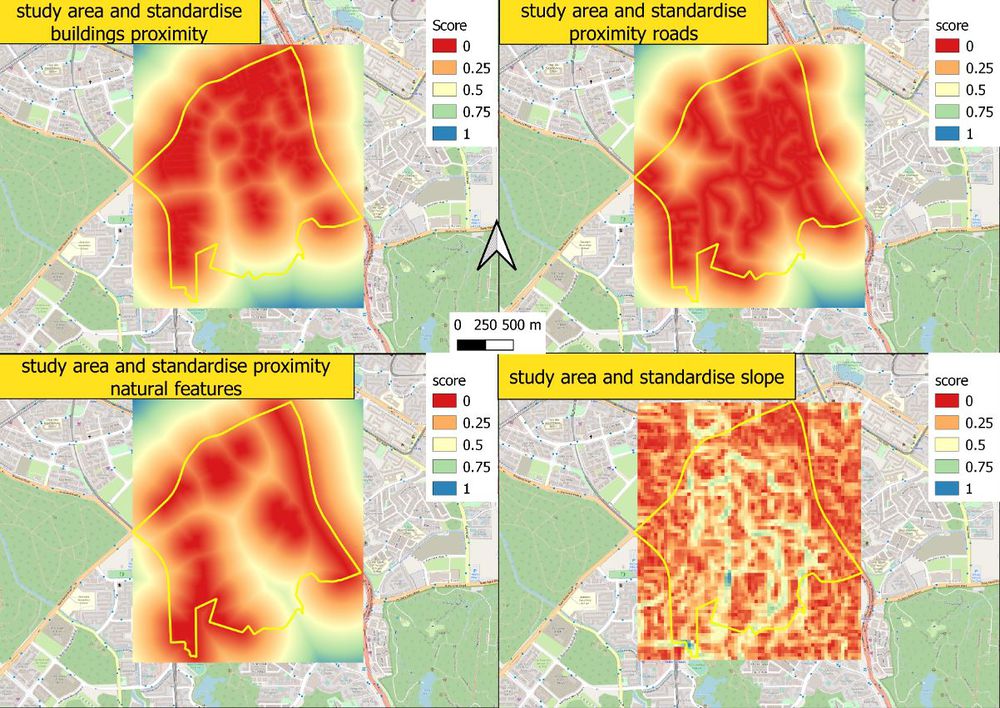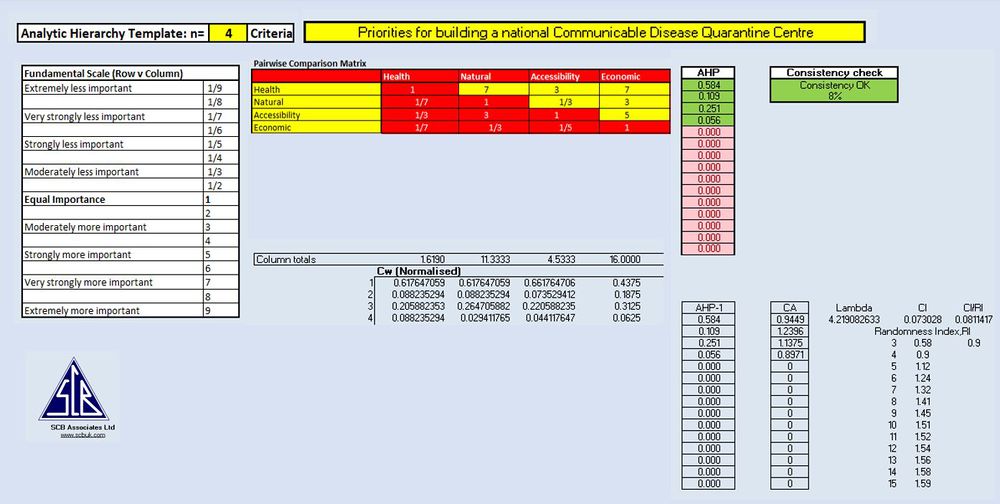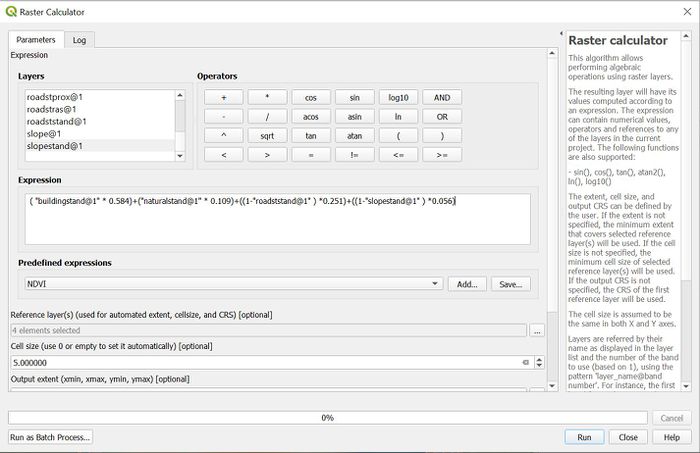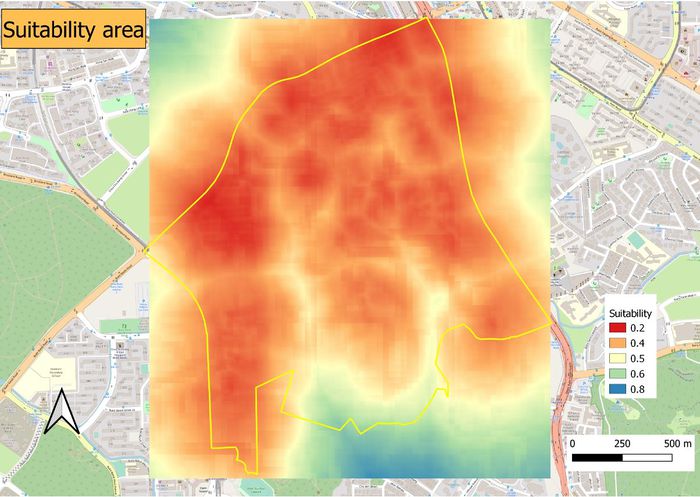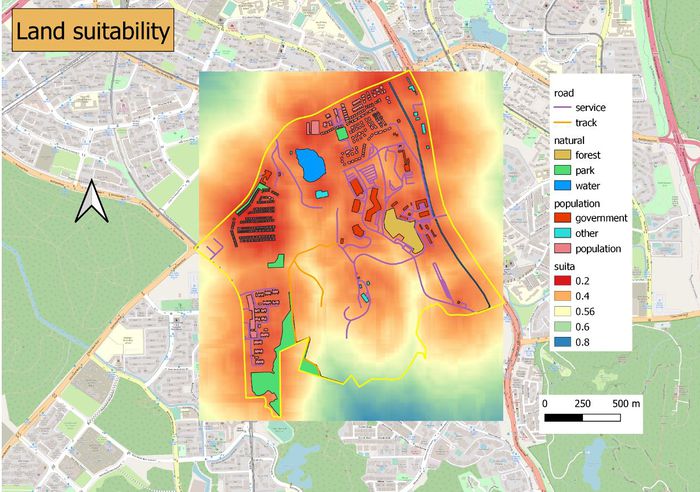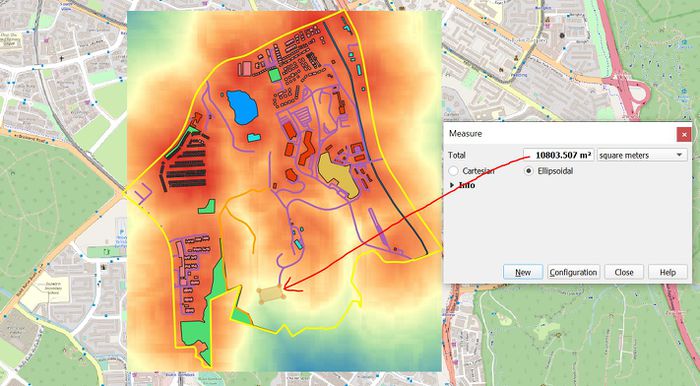Difference between revisions of "SMT201 AY2019-20G1 Ex2 LeeHuiYun"
| (30 intermediate revisions by the same user not shown) | |||
| Line 1: | Line 1: | ||
| − | == | + | ==Objective== |
| + | The objective of this study is to identify a suitable location in the Gombak planning subzone with a contiguous area of at least 10,000m2 to build a national Communicable Disease Quarantine Centre. This study would take the following factors into account while selecting the location. | ||
| + | |||
| + | *Health risk factor: Study of building by using the location of building to find building proximity to identify an area that is furthest away from the population to reduce the risk of spreading disease. | ||
| + | |||
| + | *Accessibility factor: Study of the road by using the location of the road to find road proximity to identify the area that is closed to the road for easy transportation. Road namely: service roads and tracks | ||
| + | |||
| + | *Natural conservation factor: Study of natural features by using location of natural to find natural proximity to identify area that is away from forested land, park, and water. | ||
| + | |||
| + | *Economic factor: Study of slope by using slope and elevation of Gombak to identify the gentlest slope to minimized construction cost of cut-and-fill. | ||
| + | |||
| + | ==Study Area== | ||
| + | <br> [[File:Gomby.jpg|700px|frameless|center]] <br> | ||
| + | The above map shows the study area which is Gombak with the factors that I need to take into account. | ||
<br> [[File:S4v1.jpg|1000px|frameless|center]] <br> | <br> [[File:S4v1.jpg|1000px|frameless|center]] <br> | ||
| + | <strong>Health risk factor (Building):</strong> | ||
| + | |||
| + | For building, I have 3 main categories. Mainly government, other and population. Under government, there are military camp and fire station. Under other, there are public transport and religious place. Under population, there are residential areas. So, from these 3 categories, I can observe that even though all building has the probability of humans’ activity but some of them have a higher probability. Ranging from population, other and government in descending of humans’ activity. As places like government such as military camp, if there is a disease outbreak the government would stop any army personnel from training. | ||
| + | <br> | ||
| + | |||
| + | <strong>Accessibility factor (Road):</strong> | ||
| + | |||
| + | For road, I have only focus on the service road and track which is my target type of road. There is a total of 186 service roads in Gombak which spread widely across the subzone and 2 tracks which is around the southern part of Gombak. | ||
| + | <br> | ||
| + | |||
| + | <strong>Natural conservation factor (natural features):</strong> | ||
| + | |||
| + | For natural features, there are 3 main categories which are forest, park, and water in Gombak. There is a total of 1 forest, 4 parks, and 3 water. Forest usage might be for military training located near the military camp on the eastern side of Gombak which is restricted from the resident. 4 parks are located near the residential area for residents of Gombak leisure purpose. 1 water is located in the forest which might be a lake and the rest is one kennel located at the eastern side of Gombak. | ||
| + | <br> | ||
| + | |||
| + | <strong>Economic factor (Elevation):</strong> | ||
| + | |||
| + | For Elevation, I can observe that Gombak is steeper in the Central area which is in blue and the steep become gentle when it nearer to the border of Gombak which is in red. | ||
| + | <br> | ||
==Proximity== | ==Proximity== | ||
| + | <br> [[File:Proxi.jpg|1000px|frameless|center]] <br> | ||
| + | |||
| + | <strong>Health risk factor (Building proximity):</strong> | ||
| + | |||
| + | To get building proximity in Gombak, I rasterize building and use raster analysis. Nearer to the building the land area is darker and further away from the building it becomes lighter. Thus, the lighter area is more suitable for building a national Communicable Disease Quarantine Centre as there is a lower risk in exposing the residents in Gombak with the disease. The maximum distance of 5m by 5m land area from the map is 200m away from the building with an actual distance of 866.3m. | ||
| + | |||
| + | <strong>Accessibility factor (Road proximity):</strong> | ||
| + | |||
| + | To get road proximity in Gombak, I use the same method. Nearer to the road the land area is darker and further away from the road it becomes lighter. Thus, the darker area is more suitable for building a national Communicable Disease Quarantine Centre as it is needed to be near a road for easily accessible for transportation. The maximum distance of 5m by 5m land area from the map is 200m away from the road with the actual distance of 772m. | ||
| + | |||
| + | <strong>Natural conservation factor (natural features proximity):</strong> | ||
| + | |||
| + | To get natural features proximity in Gombak, I repeat the method. Nearer to the natural features the land area is darker and further away from the natural features it becomes lighter. So, the lighter area is more suitable to build a national Communicable Disease Quarantine Centre as it is needed to be away from forested land, park, and water to minimize the risk of contaminating the resources. The maximum distance 5m by 5m land area from the map is 200m away from the natural features with the actual distance of 864m. | ||
| + | <strong>Economic factor (Slope):</strong> | ||
| + | I use slope analysis by inputting elevation to derive slope of Gombak. The legend shows the steepness ranging from 0 to 36.9 with the color from darker to lighter. Thus, the darker area is more suit to build a national Communicable Disease Quarantine Centre as it has a more gentle slope which requires less cut-and-fill of the land. | ||
==Criterion scores== | ==Criterion scores== | ||
| + | <br> [[File:Stand.jpg|500px|frameless|center]] <br> | ||
| + | For Criterion scores, I use Min-Max to standardise the score for comparison between the factors. | ||
| + | |||
| + | <br> [[File:Standy.jpg|1000px|frameless|center]] <br> | ||
| + | |||
| + | <strong>Criterion scoring for building:</strong> | ||
| + | |||
| + | For building criterion scoring, I use the method that I stated above to standardize the score between 0 and 1. With 0 (red) nearest to the building and 1 (blue) furthest away from the building. Thus, 0.75 (green) ranging from 1 (blue) area is more desired to build a national Communicable Disease Quarantine Centre to be away from the population to reduce the spread of disease. | ||
| + | |||
| + | <strong>Criterion scoring for road:</strong> | ||
| + | For road criterion scoring, I did the same method to standardize the score between 0 and 1. With 0 (red) nearest to the road and 1 (blue) furthest away from the road. Thus, the 0 (red) area is more desired to build a national Communicable Disease Quarantine Centre to be easily accessible. | ||
| + | <strong>Criterion scoring for natural features:</strong> | ||
| + | |||
| + | For nature features criterion scoring, I use the method that I stated above to standardize the score between 0 and 1. With 0 (red) nearest to the natural features and 1 (blue) furthest away from the natural features. Thus, 0.75 (green) ranging from 1 (blue) area is more desired to build a national Communicable Disease Quarantine Centre to be away from the natural features to reduce the risk of contaminating the natural features. | ||
| + | |||
| + | <strong>Criterion scoring for slope:</strong> | ||
| + | |||
| + | For slope criterion scoring, I did the same method to standardize the score between 0 and 1. With 0 (red) as gentle slope and 1 (blue) as steeper slope. Thus, the 0 (red) area is more desired to build a national Communicable Disease Quarantine Centre to reduce cost when constructing the national Communicable Disease Quarantine Centre. | ||
==AHP== | ==AHP== | ||
| + | [[File:Appph.jpg|1000px|frameless|center]] | ||
| + | |||
| + | AHP Template were provided by SCB Association found in the Excel-based AHP library. The above table shows my calculation matrix for the priorities. | ||
| + | |||
| + | I have place very strongly more important for Health risk as the main purpose of a national Communicable Disease Quarantine Centre was to prevent the disease from spreading to those citizens who are healthy. Thus, Health risk have the highest priorities. Next would be, accessibility which priorities range from moderately more important to strongly more important. The reason is that it would be easier when transferring those who are affected to the location with the shortest time possible as to minimize the risk of affecting other citizens and contaminating the Natural conservation. Moving on would be, Natural conservation with Moderately more important as most disease spread by air instead of Natural conservation. Lastly would be, Economic as other have more important than cost. | ||
| + | |||
| + | ==Area selection== | ||
| + | [[File:Suiit.jpg|700px|frameless|center]]<br> | ||
| + | |||
| + | The above screenshot shows the calculation to derive a suitable land area. I have multiple the weight that I got from AHP with the standardize layers respectively to the factors. In addition, I have subtracted the standardize road and slope layer by 1 before multiplying with their weight as the Centre is required to be closer to the road and gentle steep for slope whereas the rest is further the better. | ||
| + | |||
| + | <br>[[File:Suitta.jpg|700px|frameless|center]]<br> | ||
| + | |||
| + | The above map shows the suitability of the land to build a national Communicable Disease Quarantine Centre. The blue and green area is more suitable than the rest with blue being the most suitable of 0.8. | ||
| + | <br>[[File:Ya.jpg|700px|frameless|center]]<br> | ||
| + | <br>[[File:Suijuji.jpg|700px|frameless|center]]<br> | ||
| − | + | The map above shows the recommended area to build a national Communicable Disease Quarantine Centre. Which is located in the southern area of Gombak with an area of 10803.5m2. In addition, it is located within the region of green area which is the next suitable land to use of 0.6. Furthermore, it is not near any building and natural the encourage the spread of disease. There is a service road that has direct access to the area. Thus, it is the most suitable area. For legend and scale, please look at previous map. | |
Latest revision as of 16:19, 10 November 2019
Objective
The objective of this study is to identify a suitable location in the Gombak planning subzone with a contiguous area of at least 10,000m2 to build a national Communicable Disease Quarantine Centre. This study would take the following factors into account while selecting the location.
- Health risk factor: Study of building by using the location of building to find building proximity to identify an area that is furthest away from the population to reduce the risk of spreading disease.
- Accessibility factor: Study of the road by using the location of the road to find road proximity to identify the area that is closed to the road for easy transportation. Road namely: service roads and tracks
- Natural conservation factor: Study of natural features by using location of natural to find natural proximity to identify area that is away from forested land, park, and water.
- Economic factor: Study of slope by using slope and elevation of Gombak to identify the gentlest slope to minimized construction cost of cut-and-fill.
Study Area
The above map shows the study area which is Gombak with the factors that I need to take into account.
Health risk factor (Building):
For building, I have 3 main categories. Mainly government, other and population. Under government, there are military camp and fire station. Under other, there are public transport and religious place. Under population, there are residential areas. So, from these 3 categories, I can observe that even though all building has the probability of humans’ activity but some of them have a higher probability. Ranging from population, other and government in descending of humans’ activity. As places like government such as military camp, if there is a disease outbreak the government would stop any army personnel from training.
Accessibility factor (Road):
For road, I have only focus on the service road and track which is my target type of road. There is a total of 186 service roads in Gombak which spread widely across the subzone and 2 tracks which is around the southern part of Gombak.
Natural conservation factor (natural features):
For natural features, there are 3 main categories which are forest, park, and water in Gombak. There is a total of 1 forest, 4 parks, and 3 water. Forest usage might be for military training located near the military camp on the eastern side of Gombak which is restricted from the resident. 4 parks are located near the residential area for residents of Gombak leisure purpose. 1 water is located in the forest which might be a lake and the rest is one kennel located at the eastern side of Gombak.
Economic factor (Elevation):
For Elevation, I can observe that Gombak is steeper in the Central area which is in blue and the steep become gentle when it nearer to the border of Gombak which is in red.
Proximity
Health risk factor (Building proximity):
To get building proximity in Gombak, I rasterize building and use raster analysis. Nearer to the building the land area is darker and further away from the building it becomes lighter. Thus, the lighter area is more suitable for building a national Communicable Disease Quarantine Centre as there is a lower risk in exposing the residents in Gombak with the disease. The maximum distance of 5m by 5m land area from the map is 200m away from the building with an actual distance of 866.3m.
Accessibility factor (Road proximity):
To get road proximity in Gombak, I use the same method. Nearer to the road the land area is darker and further away from the road it becomes lighter. Thus, the darker area is more suitable for building a national Communicable Disease Quarantine Centre as it is needed to be near a road for easily accessible for transportation. The maximum distance of 5m by 5m land area from the map is 200m away from the road with the actual distance of 772m.
Natural conservation factor (natural features proximity):
To get natural features proximity in Gombak, I repeat the method. Nearer to the natural features the land area is darker and further away from the natural features it becomes lighter. So, the lighter area is more suitable to build a national Communicable Disease Quarantine Centre as it is needed to be away from forested land, park, and water to minimize the risk of contaminating the resources. The maximum distance 5m by 5m land area from the map is 200m away from the natural features with the actual distance of 864m.
Economic factor (Slope):
I use slope analysis by inputting elevation to derive slope of Gombak. The legend shows the steepness ranging from 0 to 36.9 with the color from darker to lighter. Thus, the darker area is more suit to build a national Communicable Disease Quarantine Centre as it has a more gentle slope which requires less cut-and-fill of the land.
Criterion scores
For Criterion scores, I use Min-Max to standardise the score for comparison between the factors.
Criterion scoring for building:
For building criterion scoring, I use the method that I stated above to standardize the score between 0 and 1. With 0 (red) nearest to the building and 1 (blue) furthest away from the building. Thus, 0.75 (green) ranging from 1 (blue) area is more desired to build a national Communicable Disease Quarantine Centre to be away from the population to reduce the spread of disease.
Criterion scoring for road:
For road criterion scoring, I did the same method to standardize the score between 0 and 1. With 0 (red) nearest to the road and 1 (blue) furthest away from the road. Thus, the 0 (red) area is more desired to build a national Communicable Disease Quarantine Centre to be easily accessible.
Criterion scoring for natural features:
For nature features criterion scoring, I use the method that I stated above to standardize the score between 0 and 1. With 0 (red) nearest to the natural features and 1 (blue) furthest away from the natural features. Thus, 0.75 (green) ranging from 1 (blue) area is more desired to build a national Communicable Disease Quarantine Centre to be away from the natural features to reduce the risk of contaminating the natural features.
Criterion scoring for slope:
For slope criterion scoring, I did the same method to standardize the score between 0 and 1. With 0 (red) as gentle slope and 1 (blue) as steeper slope. Thus, the 0 (red) area is more desired to build a national Communicable Disease Quarantine Centre to reduce cost when constructing the national Communicable Disease Quarantine Centre.
AHP
AHP Template were provided by SCB Association found in the Excel-based AHP library. The above table shows my calculation matrix for the priorities.
I have place very strongly more important for Health risk as the main purpose of a national Communicable Disease Quarantine Centre was to prevent the disease from spreading to those citizens who are healthy. Thus, Health risk have the highest priorities. Next would be, accessibility which priorities range from moderately more important to strongly more important. The reason is that it would be easier when transferring those who are affected to the location with the shortest time possible as to minimize the risk of affecting other citizens and contaminating the Natural conservation. Moving on would be, Natural conservation with Moderately more important as most disease spread by air instead of Natural conservation. Lastly would be, Economic as other have more important than cost.
Area selection
The above screenshot shows the calculation to derive a suitable land area. I have multiple the weight that I got from AHP with the standardize layers respectively to the factors. In addition, I have subtracted the standardize road and slope layer by 1 before multiplying with their weight as the Centre is required to be closer to the road and gentle steep for slope whereas the rest is further the better.
The above map shows the suitability of the land to build a national Communicable Disease Quarantine Centre. The blue and green area is more suitable than the rest with blue being the most suitable of 0.8.
The map above shows the recommended area to build a national Communicable Disease Quarantine Centre. Which is located in the southern area of Gombak with an area of 10803.5m2. In addition, it is located within the region of green area which is the next suitable land to use of 0.6. Furthermore, it is not near any building and natural the encourage the spread of disease. There is a service road that has direct access to the area. Thus, it is the most suitable area. For legend and scale, please look at previous map.
